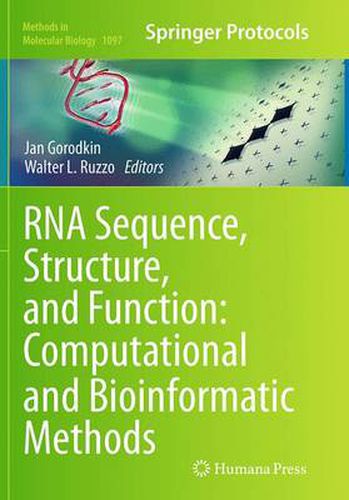Readings Newsletter
Become a Readings Member to make your shopping experience even easier.
Sign in or sign up for free!
You’re not far away from qualifying for FREE standard shipping within Australia
You’ve qualified for FREE standard shipping within Australia
The cart is loading…






This title is printed to order. This book may have been self-published. If so, we cannot guarantee the quality of the content. In the main most books will have gone through the editing process however some may not. We therefore suggest that you be aware of this before ordering this book. If in doubt check either the author or publisher’s details as we are unable to accept any returns unless they are faulty. Please contact us if you have any questions.
The existence of genes for RNA molecules not coding for proteins (ncRNAs) has been recognized since the 1950’s, but until recently, aside from the critically important ribosomal and transfer RNA genes, most focus has been on protein coding genes. However, a long series of striking discoveries, from RNA’s ability to carry out catalytic function, to discovery of riboswitches, microRNAs and other ribo-regulators performing critical tasks in essentially all living organisms, has created a burgeoning interest in this primordial component of the biosphere. However, the structural characteristics and evolutionary constraints on RNA molecules are very different from those of proteins, necessitating development of a completely new suite of informatic tools to address these challenges. In RNA Sequence, Structure, Function: Computational and Bioinformatic Methods, expert researchers in the field describe a substantial and relevant fraction of these methodologies from both practical and computational/algorithmic perspectives. Focusing on both of these directions addresses both the biologist interested in knowing more about RNA bioinformatics as well as the bioinformaticist interested in more detailed aspects of the algorithms. Written in the highly successful Methods in Molecular Biology series format, the chapters include the kind of detailed description and implementation advice that is crucial for getting optimal results.
Thorough and intuitive, RNA Sequence, Structure, Function: Computational and Bioinformatic Methods aids scientists in continuing to study key methods and principles of RNA bioinformatics.
$9.00 standard shipping within Australia
FREE standard shipping within Australia for orders over $100.00
Express & International shipping calculated at checkout
This title is printed to order. This book may have been self-published. If so, we cannot guarantee the quality of the content. In the main most books will have gone through the editing process however some may not. We therefore suggest that you be aware of this before ordering this book. If in doubt check either the author or publisher’s details as we are unable to accept any returns unless they are faulty. Please contact us if you have any questions.
The existence of genes for RNA molecules not coding for proteins (ncRNAs) has been recognized since the 1950’s, but until recently, aside from the critically important ribosomal and transfer RNA genes, most focus has been on protein coding genes. However, a long series of striking discoveries, from RNA’s ability to carry out catalytic function, to discovery of riboswitches, microRNAs and other ribo-regulators performing critical tasks in essentially all living organisms, has created a burgeoning interest in this primordial component of the biosphere. However, the structural characteristics and evolutionary constraints on RNA molecules are very different from those of proteins, necessitating development of a completely new suite of informatic tools to address these challenges. In RNA Sequence, Structure, Function: Computational and Bioinformatic Methods, expert researchers in the field describe a substantial and relevant fraction of these methodologies from both practical and computational/algorithmic perspectives. Focusing on both of these directions addresses both the biologist interested in knowing more about RNA bioinformatics as well as the bioinformaticist interested in more detailed aspects of the algorithms. Written in the highly successful Methods in Molecular Biology series format, the chapters include the kind of detailed description and implementation advice that is crucial for getting optimal results.
Thorough and intuitive, RNA Sequence, Structure, Function: Computational and Bioinformatic Methods aids scientists in continuing to study key methods and principles of RNA bioinformatics.